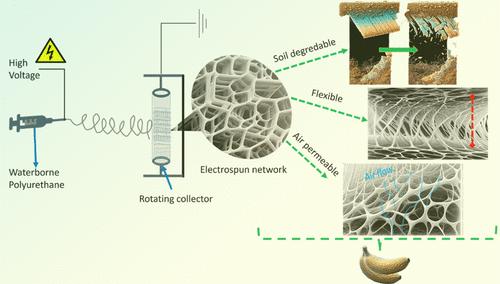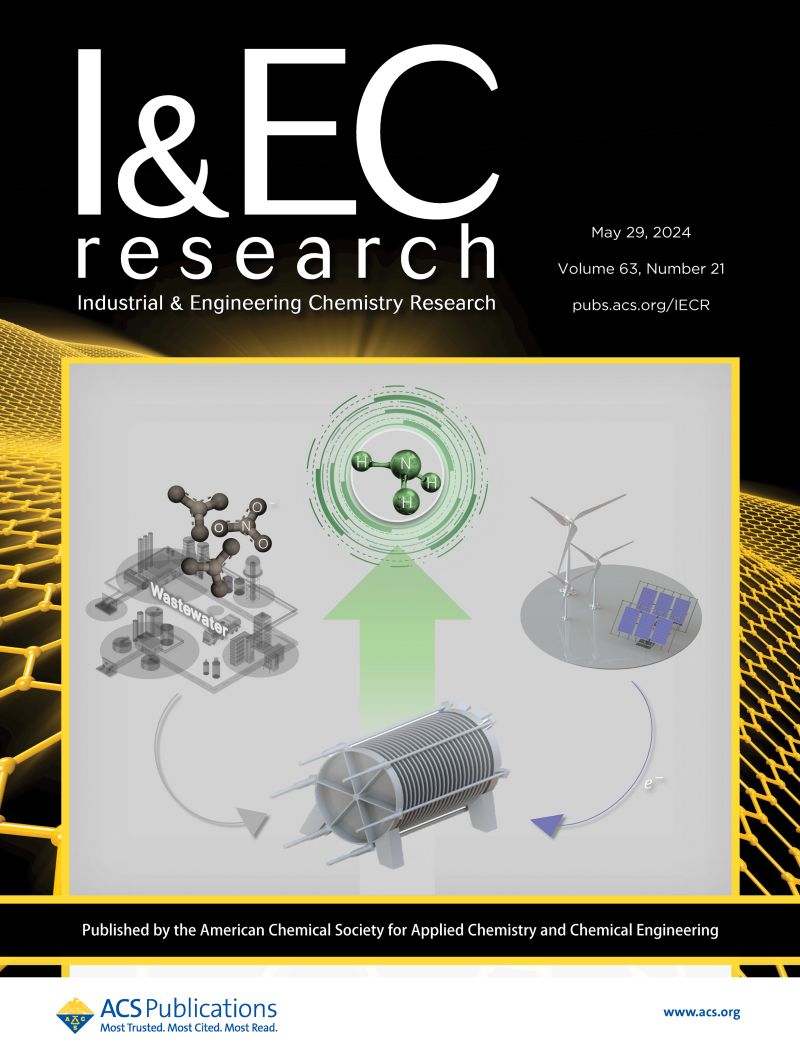Creating Safe, Biodegradable Nanofibers for Food Protection: A Look into Waterborne Polyurethane Electrospinning
IF 3.9
3区 工程技术
Q2 ENGINEERING, CHEMICAL
引用次数: 0
Abstract
Failing to package and preserve food safely causes contamination and the waste of many food materials. To address this point, in this study, an electrospun water-based polyurethane material with a biocompatible and air-permeable texture was prepared to be used as a food packaging material. For this purpose, a waterborne polyurethane (WBPU) was synthesized through melt polymerization using biocompatible polymers, such as poly(caprolactone diol) and poly(ethylene glycol) as soft segments and lysine diisocyanate as a hard segment, followed by emulsifying with l-lysine aqueous solution in the absence of a catalyst. Then, the electrospinning of the WBPU was conducted to obtain a fibrous film-like material without contributing any additive polymer to the solution. The conditions yielding the most suitable electrospun nanofibrous network tissue were investigated by changing the molecular mass and mole ratio of soft segment polymers used in the synthesis and the type of diol molecules, such as 1,3-propanediol, 1,4-butanediol, and glycerol, used as a chain extender in detail. Structural, thermal, morphological, and mechanical properties of WBPU nanofibers were determined by attenuated total reflectance–Fourier transform infrared, 1H NMR, GPC, DSC, scanning electron microscopy, contact angle measurement, and tensile test, respectively. The samples’ biodegradability and cytotoxicity were demonstrated by burying them in garden soil for a week and the MTT test, respectively. Finally, the usability of the WBPU nanofibrous mesh tissue as food packaging was investigated by covering bananas. The main contribution of this work is the development of a soil-degradable, biocompatible, and air-permeable WBPU nanofibrous material suitable for food packaging applications that can potentially reduce food contamination and waste.

为食品保护创造安全、可生物降解的纳米纤维:了解水性聚氨酯电纺丝技术
如果不能安全地包装和保存食品,就会造成污染和许多食品材料的浪费。针对这一点,本研究制备了一种具有生物相容性和透气性质地的电纺水性聚氨酯材料,以用作食品包装材料。为此,在不使用催化剂的情况下,以生物相容性聚合物(如聚己内酯二醇和聚乙二醇)为软段,以赖氨酸二异氰酸酯为硬段,通过熔融聚合合成了水性聚氨酯(WBPU),然后用赖氨酸水溶液进行乳化。然后,对 WBPU 进行电纺丝,在溶液中不添加任何添加聚合物的情况下获得纤维膜状材料。通过改变合成中使用的软段聚合物的分子质量和摩尔比以及用作扩链剂的二元醇分子(如 1,3-丙二醇、1,4-丁二醇和甘油)的类型,详细研究了产生最合适的电纺纳米纤维网络组织的条件。分别通过衰减全反射-傅立叶变换红外光谱、1H NMR、GPC、DSC、扫描电子显微镜、接触角测量和拉伸试验测定了 WBPU 纳米纤维的结构、热、形态和力学性能。样品的生物降解性和细胞毒性分别通过在花园土壤中埋藏一周和 MTT 试验来证明。最后,通过覆盖香蕉研究了 WBPU 纳米纤维网组织作为食品包装的可用性。这项工作的主要贡献在于开发出了一种可在土壤中降解、生物相容且透气的 WBPU 纳米纤维材料,这种材料适用于食品包装应用,有可能减少食品污染和浪费。
本文章由计算机程序翻译,如有差异,请以英文原文为准。
求助全文
约1分钟内获得全文
求助全文
来源期刊

Industrial & Engineering Chemistry Research
工程技术-工程:化工
CiteScore
7.40
自引率
7.10%
发文量
1467
审稿时长
2.8 months
期刊介绍:
ndustrial & Engineering Chemistry, with variations in title and format, has been published since 1909 by the American Chemical Society. Industrial & Engineering Chemistry Research is a weekly publication that reports industrial and academic research in the broad fields of applied chemistry and chemical engineering with special focus on fundamentals, processes, and products.
 求助内容:
求助内容: 应助结果提醒方式:
应助结果提醒方式:


